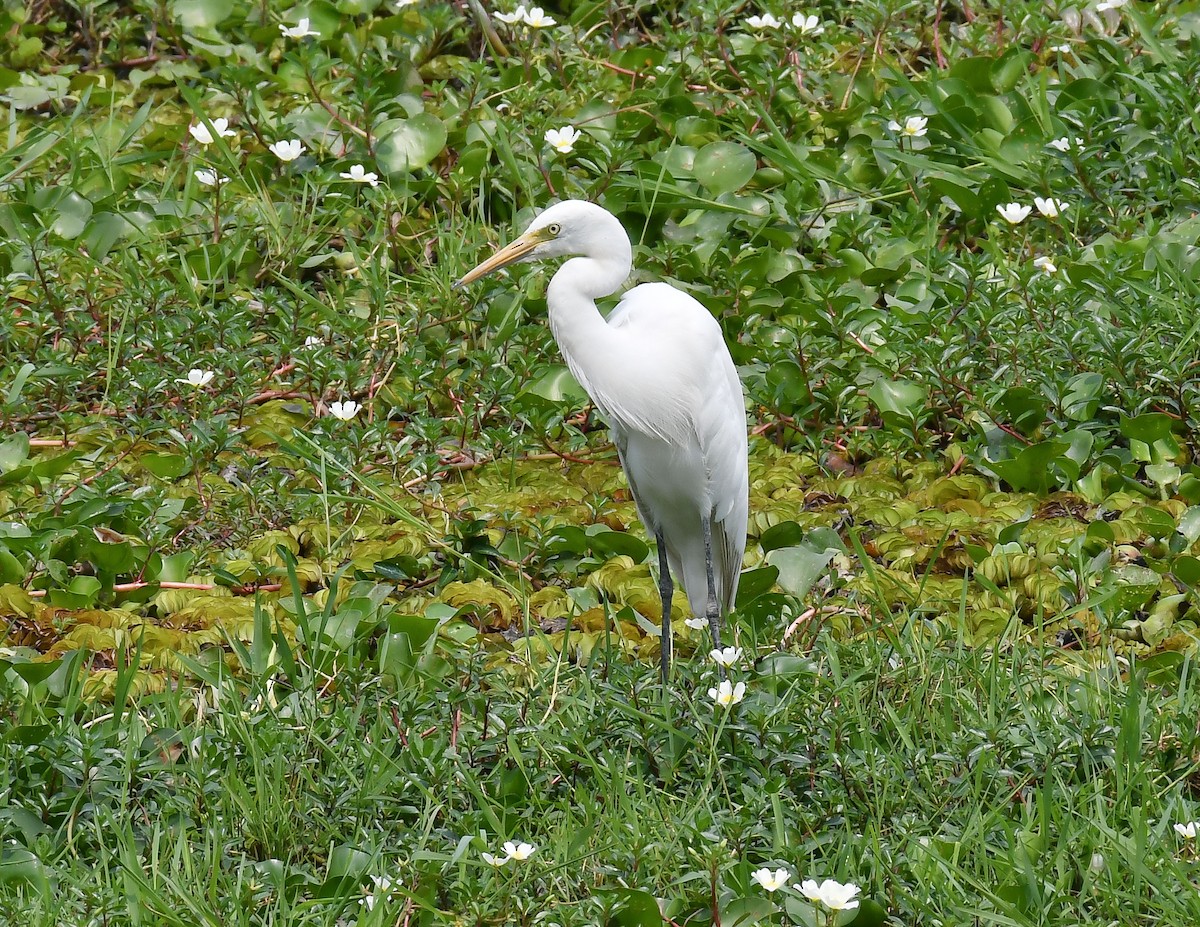Family: Ardeidae
Genus: Ardea
Large, lanky, long-necked white heron. Size and black legs help separate from other egrets. Widespread and fairly common across the globe. Bill color varies across range: always yellow in the Americas, black in breeding season elsewhere. Occurs in any shallow wetland, including ponds, marshes, and tidal mudflats. Slowly stalks prey in shallow water. Often seen singly, but sometimes gathers in large numbers where food is plentiful. Breeds in colonies, frequently mixed with other egrets and herons.
Photo: Look how gorgeous [myshortcode]
Description [myshortcode]

The Great Egret has a wide distribution range, inhabiting every continent except Antarctica. This bird can be found in North and South America, Europe, Africa, Asia, and Australia, making it one of the most widely distributed species of heron. It prefers a variety of wetland habitats, including marshes, swamps, lakes, rivers, and coastal areas, where it can hunt for fish, amphibians, and other small aquatic creatures. In North America, the Great Egret is prevalent along the eastern and Gulf coasts, as well as in parts of the Midwest and southern Canada. In South America, it is found throughout much of the continent, particularly along the Amazon River and its tributaries. In Europe, the species is distributed across southern and eastern regions, including the Mediterranean coastline. In Africa, the Great Egret occurs in numerous countries, from the northern regions down to the southern tip of the continent. Additionally, in Asia, it can be observed in various locations, from the Indian subcontinent to Southeast Asia and parts of eastern Russia. Furthermore, in Australia, the species is widespread and can be found in wetlands and coastal areas throughout the continent.
The Great Egret’s adaptability to diverse environments contributes to its extensive distribution, as it can thrive in both freshwater and saltwater habitats. Its ability to exploit a range of ecosystems allows it to establish populations in numerous regions, from temperate to tropical climates. The bird’s remarkable capacity for dispersion and colonization further contributes to its widespread distribution across the globe.
Overall, the Great Egret’s distribution encompasses a broad geographical range, and its presence in diverse ecosystems reflects its adaptability and versatility. The species’ remarkable distribution serves as a testament to its ecological resilience and strong capacity for survival in various environments. This widespread global presence highlights the significance of the Great Egret as a distinctive and awe-inspiring bird in numerous natural habitats worldwide.




